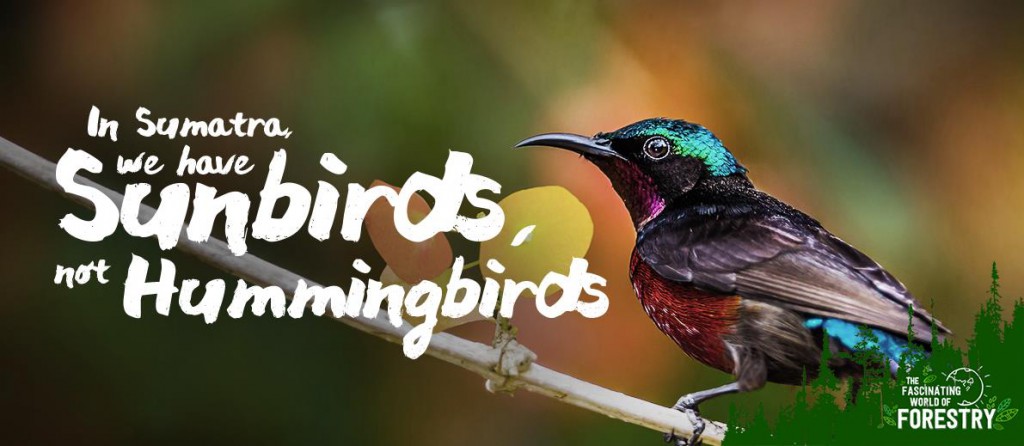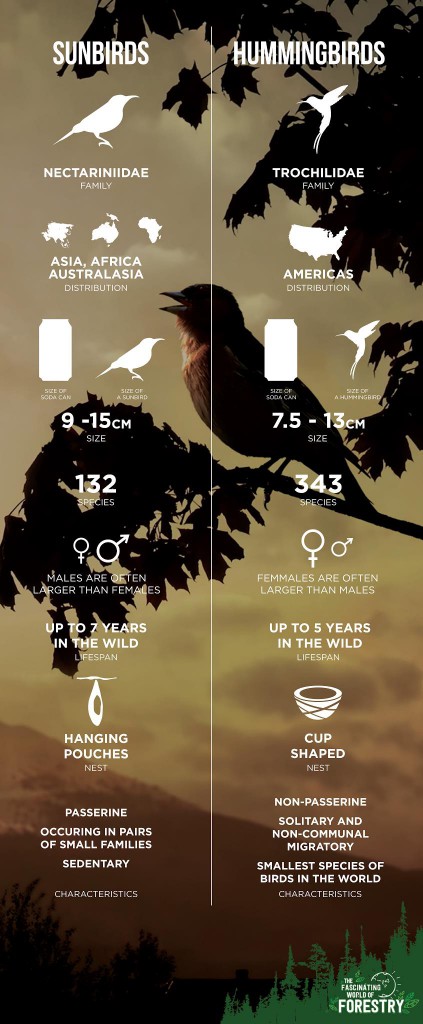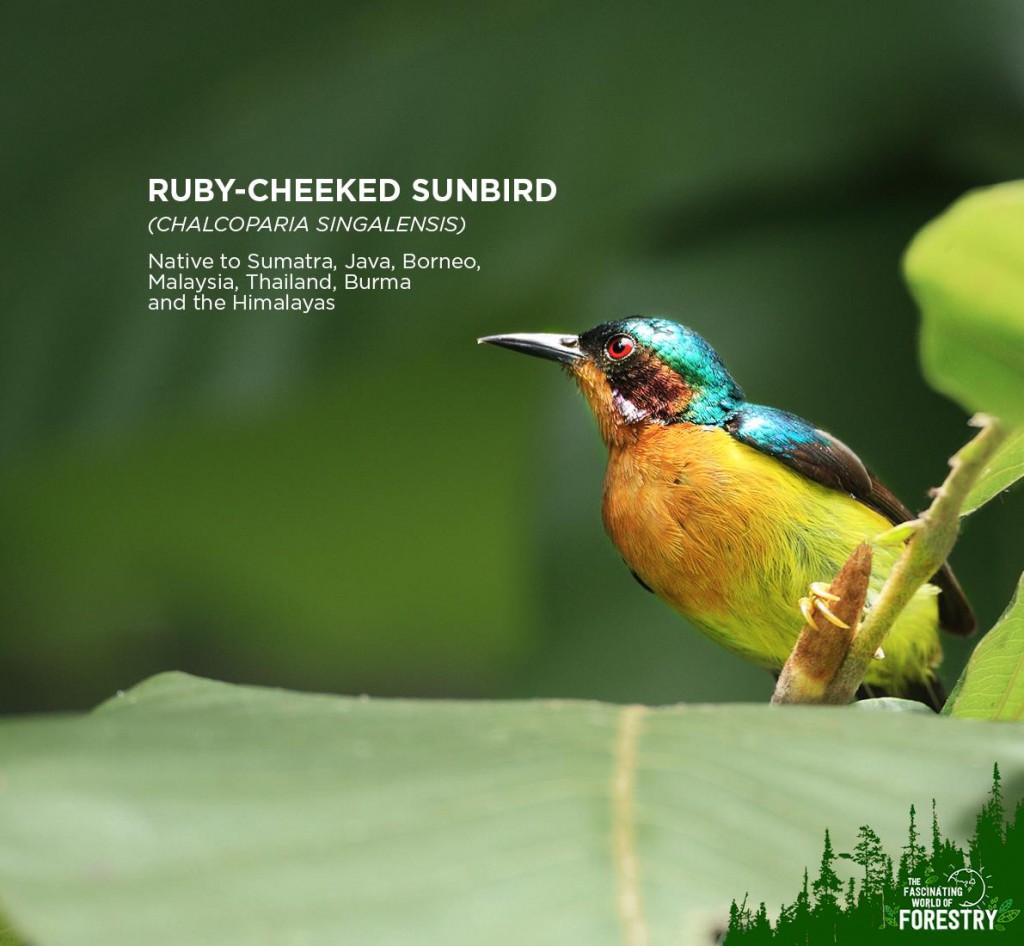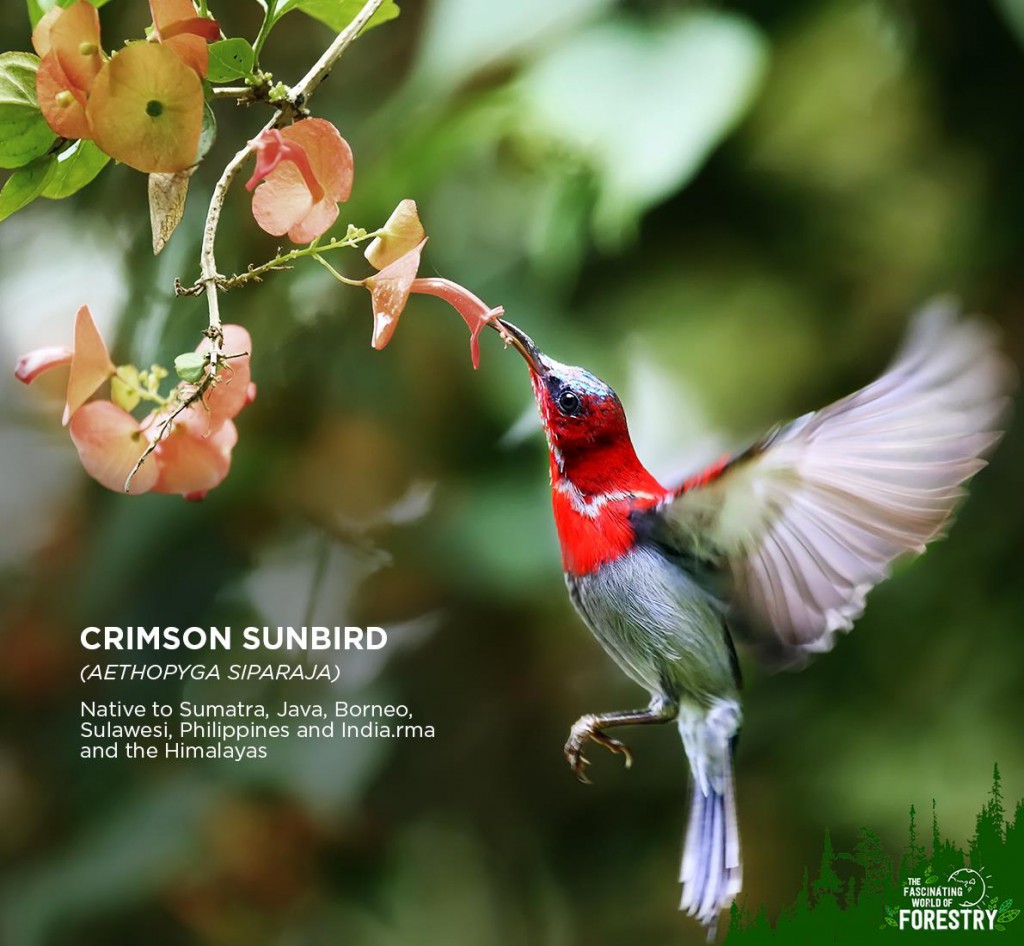Convergent Evolution of Nectar Feeders

Sunbirds and Hummingbirds are species of birds that are similar yet different. Convergent evolution1 has resulted in these unrelated species developing similar niches and features due to similar feeding lifestyles!
Did you know that birds that feed largely on nectar of flowers are called nectarivores2 ?

Sunbirds
Often mistaken for hummingbirds due to their physical likeness, sunbirds are delicately made creatures hailing from the family of Nectariniidae in the bird kingdom. With 132 species dwelling in Africa, Asia and Australia, sunbirds are diurnal3 (active in the day) and slender passerines4 (perching birds) identifiable by their long, decurved beaks and often, bright iridescent coat of feathers.
Adaptable to diverse habitats stretching from open woodland to savannas and coastal areas, the majority of sunbirds can be found in rainforests – foraging among treetops and lower bushes!
Fun Fact: While sunbirds are songbirds, their insect-like, high-pitched calls might be interpreted as unpleasant to people!

Built for Direct Flight
Delicate as they are, sunbirds are hyper-active creatures with a set of short wings that are capable of performing fast and direct flight. Unlike hummingbirds that are capable of moving between hovering, gliding and flying in all directions, sunbirds can only hover briefly before flowers for feeding. Did you know that a hummingbird’s wings can beat tirelessly up to 50-200 times per second just to sustain its hover? It’s no wonder that most sunbirds would rather perch while they feed!
Lovers of Flowers
Specialized nectarivores, sunbirds derive their energy, water and nutrient requirements from a diet that is mostly made up of high-sugar nectar and at times, small insects. Unlike bees, sunbirds and hummingbirds have little or no sense of smell and depend solely on their keen sense of sight to forage for flowers! While hummingbirds are independent, solitary and non-communal, sunbirds are more likely to occur in pairs and even small family groups.
With their long decurved beaks and brush-tipped tubular tongues, sunbirds play an important role in the pollination of tubular flowers which bees and butterflies cannot reach with their limited proboscises. Sometimes, a sunbird may “steal” nectar by puncturing the base of these flowers without pollinating them!

Foraging Under The Sun
Given their small size, lack of insulation and large surface-area-to-volume ratio, sunbirds can easily lose their energy rapidly to the environment. It is hence vital for them to feed generously in the day so enough energy can be reserved for the night. Did you know that sunbirds love to spend time under the sun because this helps them conserve energy which would otherwise be spent on generating body heat?
Contrary to popular belief, sunbirds and hummingbirds do not “hibernate”. Like hummingbirds, sunbirds living in high altitudes and latitudes might retreat into a state of torpidity while roosting5 at night to reduce body temperature and metabolic rate. Unlike hibernation, torpor6 is results in deep sleep that can occur anytime during cold weathers!
Monogamous Pairs
In tropical regions like Sumatra, sunbirds are known to breed throughout the year while species populating beyond equatorial regions mate during the season with the highest count of flowers.
Monogamous7 in nature, sunbirds breed in pairs and are known to be aggressive during nesting period, defending feeding and breeding territories. A female might lay up to 3 eggs in a hanging, purse-like nest that is crafted from vegetation and ample amounts of spider webs!
While the females are primarily responsible for incubating the eggs, both parents partake in raising sunbird chicks.
Glossary
Have a question? Ask us by commenting below!
- Convergent evolution – the process in evolution whereby unrelated species of animals develop similar structures or functions due to the need to adapt to similar environments. The sunbird and hummingbird are not related, but they have similar features due to their lifestyle demands!
- Nectarivores – Nectar feeders. Meat eaters are known as carnivores; plant eaters are known as herbivores.
- Diurnal – opposite of nocturnal; active in the day.
- Passerine – a perching bird; any bird with three toes pointing forward and one backwards on their feet.
- Torpor – a state of deep-sleep that animals experience with reduced body temperature and metabolism. Torpor enables animals to conserve energy and survive periods of food scarcity and cold weathers.
- Roost – a place where wing animals sleep at night; roosting refers to the act of resting.
- Monogamous birds – birds that form a bond (one male and one female); staying loyal to a single mate during breeding and nesting seasons until hatchlings are young enough to care for themselves.
Sources:
http://www.encyclopedia.com/topic/sunbird.aspx
http://www.softschools.com/facts/animals/sunbirds_facts/2090/
https://en.wikipedia.org/wiki/Sunbird
http://global.britannica.com/animal/sunbird
http://www.animalfacts.net/birds/sunbirds.html
http://www.hummingworlds.com/
http://www.worldofhummingbirds.com/anatomy.php
http://home.olemiss.edu/~larryago/hummingbirds/funfacts2.html
http://www.worldofhummingbirds.com/sleep.php
http://www.birds.com/blog/the-important-role-of-birds-in-pollination/
